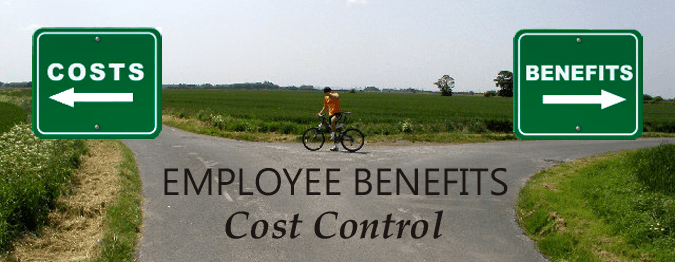Group Benefits and Retirement Savings: How to Integrate RRSPs and Pensions
By Krista DeKuyper | September 13, 2024 |

Planning for retirement can often feel like a daunting endeavor, especially with so many options available. For Canadians, integrating group benefits, registered retirement savings plans (RRSPs), and pensions can provide a comprehensive approach to securing a stable financial future. As a health insurance broker, I’ve observed that many individuals are unsure about how to effectively combine these components to achieve their retirement goals. This article will explore the interplay between group benefits, RRSPs, and pension plans, enabling you to make informed decisions about your retirement savings and group benefits.
Understanding Group Benefits: An Overview
Group benefits are employer-provided services that typically include health, dental, and life insurance, along with retirement plans such as pensions and RRSPs. By offering these benefits, employers aim to enhance employee satisfaction, improve retention, and help secure a financially stable future for their workforce.
Within the realm of group benefits, retirement plans play a critical role. Many employers extend options for both pensions and contributions to RRSPs, allowing employees to save for retirement while enjoying potential tax advantages. By understanding the full scope of group benefits, employees can leverage them to create a more secure and financially sound retirement plan.
The Role of RRSPs in Retirement Planning
Registered Retirement Savings Plans (RRSPs) are a popular savings vehicle for Canadians aimed at promoting long-term financial health. By contributing to an RRSP, individuals can defer taxes on the income they set aside until they retire. This means that your investments can grow tax-free until withdrawal, which typically occurs in retirement when you may be in a lower tax bracket.
Moreover, RRSP contributions impact your immediate tax situation; contributions reduce your taxable income for the year, which may enable you to receive a larger refund when tax season rolls around. The flexibility of RRSPs also allows for a range of investment options, including stocks, bonds, mutual funds, and more, meaning you can diversify your portfolio to match your risk tolerance and retirement goals.
RRSPs are not just a vital supplement but can serve as a core component of a holistic retirement strategy, especially when integrated with employer-sponsored pension plans.

Types of Pension Plans: Defined Benefit vs. Defined Contribution
When discussing pensions, it’s critical to understand the fundamental differences between Defined Benefit (DB) and Defined Contribution (DC) plans:
- Defined Benefit Plans: These plans promise a specified monthly benefit at retirement, usually based on factors such as salary and years of service. The employer takes on the investment risk, and as a result, employees are guaranteed a predictable income stream during retirement. This type of pension is advantageous for individuals seeking stability and assurance in their retirement finances.
- Defined Contribution Plans: In contrast, these plans do not guarantee a specific amount at retirement. Instead, both the employer and employee contribute a defined amount to the plan, and the retirement benefit depends on the performance of the investments made. While this plan type offers more flexibility and potentially higher returns, it also carries the risk of market fluctuations impacting retirement savings.
By understanding the differences between these two types of pension plans, employees can better navigate their retirement options and make informed decisions about their savings strategy.
Benefits of Integrating RRSPs with Pension Plans
Integrating RRSPs with pension plans offers numerous advantages for those planning for retirement:
- Increased Savings: By contributing to both an RRSP and a pension plan, individuals can maximize their retirement savings. The combined contributions can lead to a more considerable pot of funds once retirement arrives.
- Tax Benefits: Contributions made to both plans can effectively minimize taxable income. This double advantage allows individuals to save more efficiently on taxes while boosting their retirement savings.
- Alternate Investment Options: RRSPs offer the flexibility to invest in a more diverse range of products than many pension plans, allowing individuals to manage their investments according to their risk tolerance and financial objectives.
- Diverse Sources of Income in Retirement: Having different sources of retirement income can provide financial security and flexibility. Should one source underperform, having multiple options can mitigate risk and allow for a stable income stream during retirement.
Tax Implications of RRSP and Pension Contributions
Understanding the tax implications associated with RRSP and pension contributions is crucial for effective retirement planning:
- RRSP Contributions: Contributions to an RRSP are tax-deductible, which means they lower your taxable income for the year you contribute. This provides immediate tax relief. However, upon withdrawal in retirement, those funds are taxed as regular income.
- Pension Contributions: Employer contributions to a pension plan might be tax-deferred as well; however, employees might not get immediate tax deductions for their contributions, depending on the plan’s structure. Once funds are withdrawn, they are also taxed as income.
Overall, while contributing to both RRSPs and pension plans provides tax advantages, it’s vital to plan your withdrawals strategically during retirement to minimize tax liabilities effectively.
Strategies for Maximizing Retirement Savings with Group Benefits
To make the most of available group benefits in your retirement planning, consider the following strategies:
- Maximize Contributions: Whenever possible, take full advantage of employer contributions to pension plans. If your employer matches your contributions, contribute enough to benefit from the entire match, as this can significantly boost your retirement savings.
- Contribute to an RRSP: If you have the option, make regular contributions to your RRSP. Consider setting up automatic contributions so that you consistently grow your savings without needing to remember to do it manually.
- Review Your Investment Choices: Regularly review your pension and RRSP investment portfolios. Are your investments aligned with your retirement goals? Adjusting your allocations based on your age and risk tolerance can help you optimize growth.
- Consult Financial Advisors: Work with financial professionals who understand the nuances of group benefits, RRSPs, and pensions. They can offer personalized advice based on your individual situation, ensuring you have a well-rounded approach to retirement savings.
Conclusion
Integrating group benefits, RRSPs, and pensions is an effective strategy for building a solid retirement plan for Canadians. By understanding how each component works and leveraging the benefits they offer, individuals can maximize their retirement savings while enjoying tax advantages and investment flexibility.
Try Our Instant Insurance Quoting Tool: Quick Quotes!






























